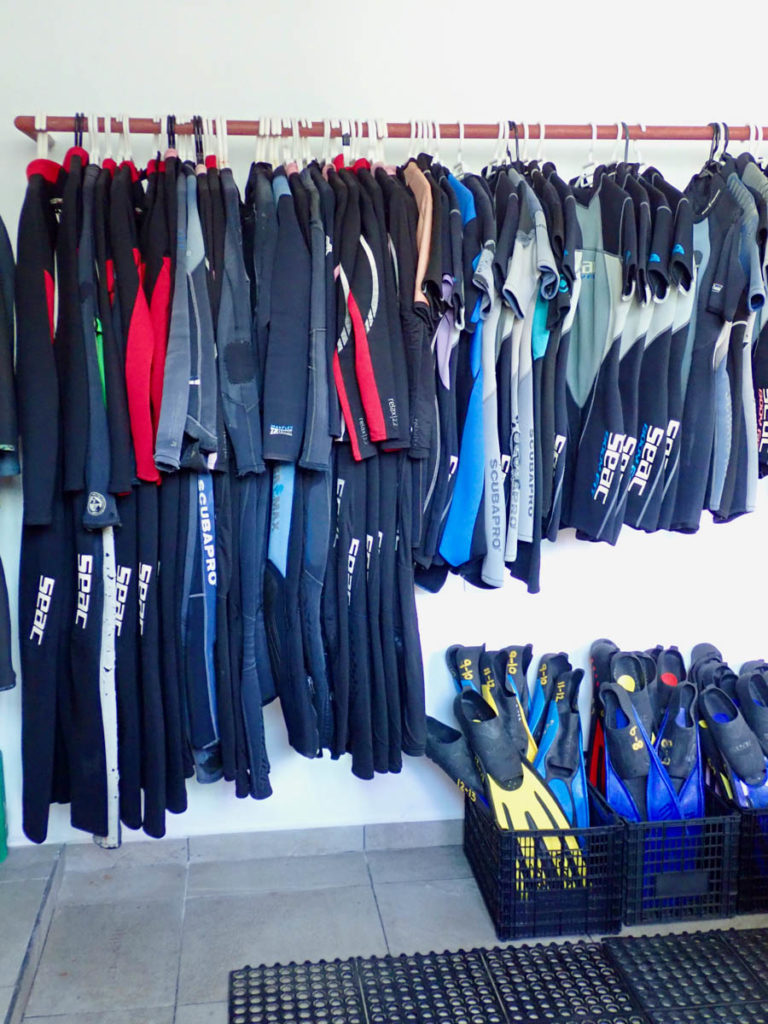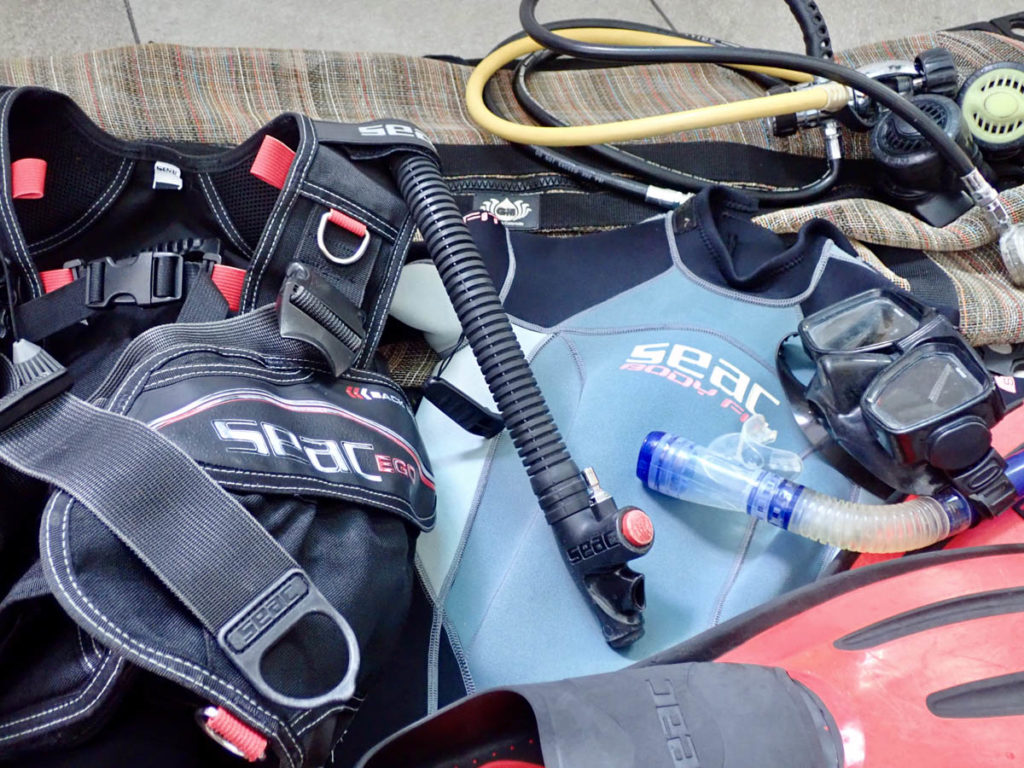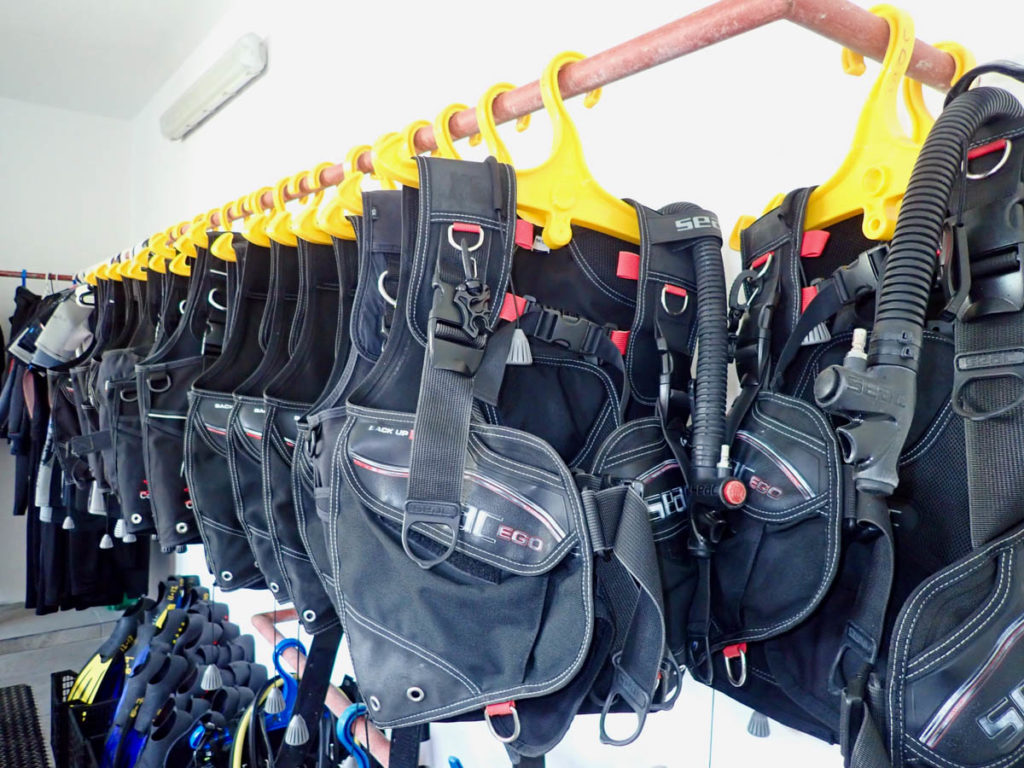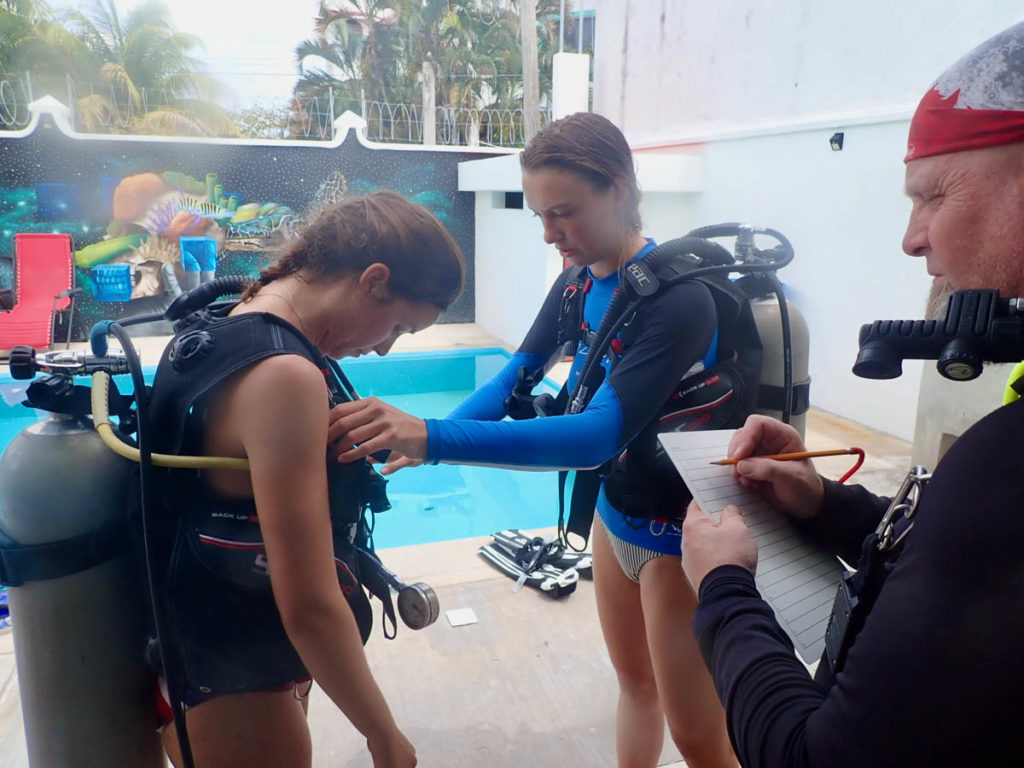When one is new to diving and beginning to seriously consider taking it up longer term, one of the first things that you begin to think about is equipment. What are you going to buy first, and what is your budget going to be? But after you have got your first set of equipment and have been enjoying the sport for a while, you may begin to decide your dive experience could be improved by investing in “better” equipment. The first set of gear you bought may have been second hand or you may have been lucky enough to have been donated some, so not your preference. You may also have had gear recommended to you by a shop that was pushing a certain brand, and as a new diver, you didn’t know any better. When you head out to buy some new gear, following the philosophy of whether it makes a dive safer, easier or more comfortable is a good method to help make a decision. If it doesn’t do any of these things, then it is not a piece of gear which would be a good investment. Of course, if it can do these things while also looking awesome, then that’s the perfect buy!

All training agencies make the point that safety is always the main thing that should concern us when underwater. This is drilled into us repeatedly at every course we attend as divers, and whenever we actually go diving. The entire thought and training processes are with safety at the forefront, this should also be at the forefront of your mind when purchasing dive gear. In the pioneering days of diving, it was fairly normal to see people using improvised equipment that was not purpose built for diving, to fulfil some kind of roll in the dive environment. A good example is because lead was expensive and not so widely available, some divers would attach tools to themselves as ballast, such as hammers. Kitchen knives were often used as cutting tools, including cumbersome bread knives. Obviously, this came with hazards such as the makeshift gear becoming lost, entangled, or damaging other pieces of more essential gear. Nowadays you would never see such practices being used, because the availability of safe gear is widespread. Safety can vary from hazards such as entanglement risk and damaging more vital gear, to being able to see or even being seen by other divers.
Colour is one of the biggest factors in making a piece of gear safer. If you have spent much time around the technical diving community, particularly at inland sites, you may have noticed that many of the divers have equipment which is overwhelmingly black in colour. To paraphrase Henry Ford, some divers really do seem to follow the idea of they can have their gear any colour they want, as long as it’s black. There is no denying that if you’ve ever wanted to pretend you are part of a Special Forces division, then your gear must be black. However, other than looking suave on the surface, entirely black gear offers a major problem. When diving in blue water locations, with 30m visibility, black gear doesn’t really present many issues. Take that same gear into a quarry with 4m visibility and the chance for silt to be stirred up, and suddenly it becomes quite hard for other divers to spot you. Even night dives in clear water are not an easy place to spot black gear. Assuming you are carrying a torch in these conditions as you should do, this may be the only way that other divers can work out exactly where you are. Having some pieces of your gear being a bright colour is therefore a massive help in letting you be spotted. This could be the difference between being located and assisted or the worst happening in an accident scenario, especially in a reduced visibility environment. Luckily, fins are available in more or less any colour under the sun. A bright neon colour such as yellow or pink will make you stick out far more, as well as alerting other divers to your superior sense of fashion. Masks are also widely available in bright colours too. While nobody wants to look like they came straight out of the ‘Call on Me’ music video, making sure you are visible underwater is something easy to consider when you buy your next piece of gear.

Making sure that your new purchase fits you correctly is also an important safety consideration, as well as being one of the main factors in comfort. Having gear that is not the right size can vary from making the dive annoying and difficult, to being outright dangerous. A poor fitting pair of fins for instance might make swimming uncomfortable and inefficient, but unless you are diving in an area of ripping currents, is unlikely to be dangerous in isolation. An ill-fitting BCD however could result in your knocking yourself out when striding or rolling in, if the cylinder is able to ride up and smack you in the head. Clearly, being unconscious and in water are not a good combination. Having correct fitting thermal protection is also a major consideration. Too tight and you risk preventing your circulation working properly, maybe even provoking carotid sinus reflex if near the neck. Too loose, and your suit essentially doesn’t function, leaving you exposed to the surrounding water temperature. There have been deaths even in recent years from wearing wetsuits too loose, particularly in temperate waters where it is easy to underestimate how quickly you lose body heat on a dive. It’s important to remember that just because gear fits you when you buy it, it may not forever. I personally had to change my BCD and suit after losing weight! I took my old 7mm wetsuit on holiday to find I was freezing in 21 degrees Celsius water all week because water flushed in and out around my wrists and neck, it was not trapping any water due to being too big for me. My BCD was also loose at the tightest setting, and had a tendency to ride up whenever vertical. Make sure that gear you buy is fitting you properly. Visit a store so you can actually try on the sizes, it is very hard to get a good idea when online shopping. Ask a member of staff in the store you visit to look over it as you are trying it on, they will likely have a good idea of how it should look when sized correctly. A correct fit is a safe fit and a comfortable one.
The final consideration for your new gear is ease of use. Does it make your diving easier than what you are currently diving with? Oftentimes, this ties into the other two factors, because an “easier” piece of gear is usually safer and comfortable. By easier, this might mean easier to read if it is a computer, easier to don or doff for larger pieces of gear, or maybe even easier to breathe from in the case of regulators. In my personal case, and in the case of many divers that I know, one of the best changes to make is going over from clipped or buckled fins to spring / bungee style fins. If you dive with boots and use open heel fins, a change like this makes it both easier for you to don and doff the fins yourself, but also for someone else to assist you. When shore diving especially, being able to quickly pull your fins on or off is a huge benefit. You don’t want to be stuck in surge faffing with a complicated or overtightened buckle system. Bungee or spring straps have the added benefit of fitting over a range of boots too, due to their elastic nature. BCDs are another piece of equipment which vary in ease of use. Integrated weights are definitely a big quality of life improvement, but finding the easiest system to dump and replace weight effectively may take some trial and error. If it isn’t easier or as easy as what you currently have, then again it is likely not worth buying. You don’t want to add difficulty to any diving tasks. There are a range of different systems you can try to streamline various aspects of diving, but the core principle of not making things more complicated will help ensure your experience remains simplified and safe.

The take home thought here should be that your dive gear primarily exists to increase your safety and comfort, while being easy to use. Picking gear that achieves all of these things as much as possible is a good way to get hold of equipment which you know you’ll enjoy diving with and hopefully keep for many years to come. As new and improved gear becomes available every year, it may be worth taking stock of your current setup every so often and considering what, if anything could be changed to improve your experience. Ultimately, when diving feels safe, easy and comfortable, it keeps the stress down and leads to a better time for you and your dive buddy.







